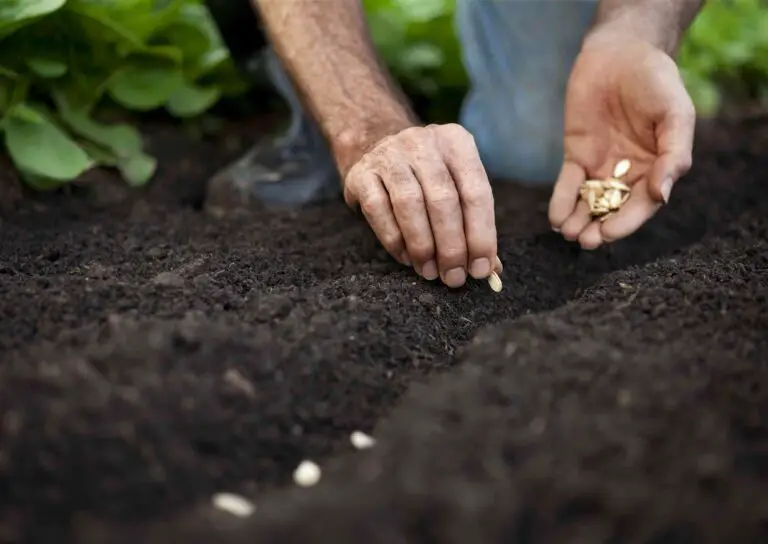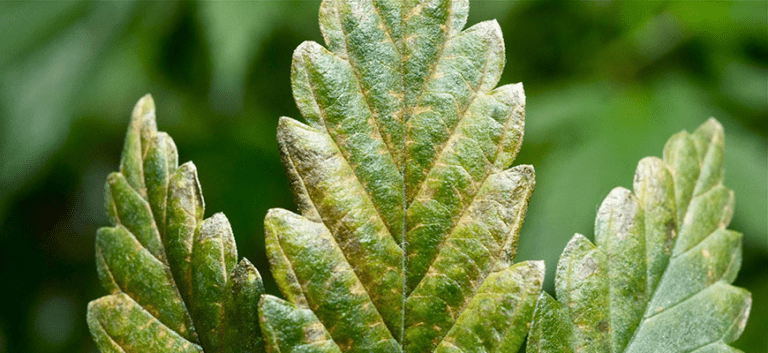Coconut Tree Tips: The best Nurturing Your Coconut Palm
Table of Contents
Understanding the Coconut Tree: An Overview of the Tree
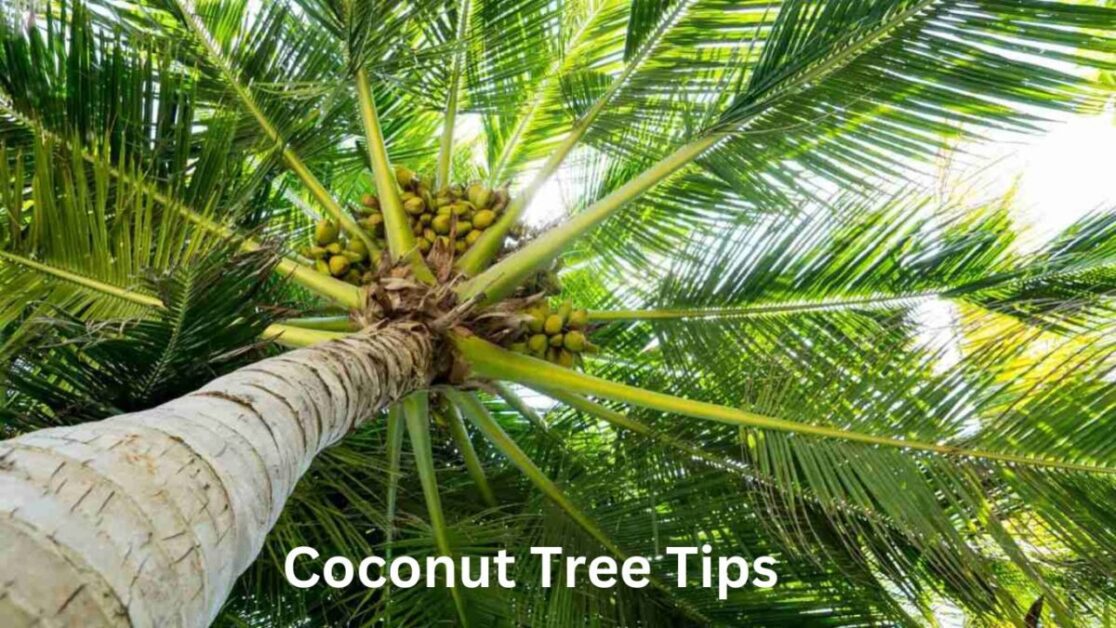
The coconut palm, scientifically known as Cocos nucifera, is a remarkable tree that has captivated people around the world for centuries. Native to tropical regions, this iconic and versatile palm is widely cultivated for its many uses, including food, medicine, and materials. With its graceful stature and distinctive fronds, the coconut palm is not only a functional tree but also an aesthetic addition to any landscape.
One of the most fascinating features of the coconut Treeis its fruit, the coconut. Encased in a hard shell, the coconut is not only a delicious tropical treat but also a valuable source of nutrition. Rich in vitamins, minerals, and healthy fats, coconuts have been praised for their numerous health benefits. From hydrating coconut water to creamy coconut milk and versatile coconut oil, this fruit offers a wide range of culinary possibilities.
In addition to its edible offerings, the coconut Tree also provides materials for various applications. The fibrous husk surrounding the coconut, known as the coir, is used in making ropes, mats, and other durable products. The sturdy timber of the trunk can be used for construction purposes, while the palm leaves are woven into thatch roofs, mats, and baskets. These sustainable materials make the coconut palm a valuable resource for communities in tropical areas.
Not only is the coconut palm beneficial, but it also has a remarkable ability to withstand harsh environmental conditions. Adapted to coastal areas, the coconut palm is known for its resilience against strong winds and salty soils. Its extensive root system helps anchor the tree firmly in the ground, allowing it to withstand the forces of nature. This adaptability has made the coconut palm a symbol of resilience and endurance in many cultures.
In conclusion, the coconut palm is a remarkable and multifaceted tree that offers an array of benefits. From its edible fruit to its versatile materials, this tropical palm is a valuable resource for both humans and the environment. Its resilience and adaptability make it a fascinating tree to study and cultivate. As we delve further into the intricacies of the coconut palm, we will explore various aspects such as selecting the right location, preparing the soil, and caring for this extraordinary tree.
Selecting the Right Location for Your Coconut Tree
When selecting the right location for your coconut palm, it is important to consider several key factors. First and foremost, coconut Tree thrive in tropical and subtropical regions, where temperatures range between 70 to 95 degrees Fahrenheit (21 to 35 degrees Celsius). They require a minimum annual rainfall of 30 to 50 inches (76 to 127 centimeters) and a relative humidity of 50 to 70 percent. Additionally, coconut palms prefer sandy or loamy soil that is well-draining and rich in organic matter.
Another crucial aspect to consider is the availability of sunlight. Coconut palms require full sun exposure, meaning they need at least 6 to 8 hours of direct sunlight daily to grow and flourish. Therefore, it is essential to choose a location that is not shaded by nearby trees or structures.
Lastly, proximity to a water source is important for the successful cultivation of coconut Tree. These trees have a high water demand and need consistent moisture in their root zone. Ideally, the location should be near a natural water source, such as a river or lake, or have access to a reliable irrigation system.
Taking these factors into consideration will help ensure that your coconut Tree has the ideal growing conditions, allowing it to thrive and produce a bountiful harvest.
Preparing the Soil for Coconut Tree or Palm Cultivation
Preparing the soil is a crucial step in the successful cultivation of coconut palms. Before planting your coconut tree, it is important to ensure that the soil is properly prepared to provide the necessary nutrients and structure for healthy growth.
First and foremost, it is essential to choose a site with well-drained soil. Coconut palms thrive in sandy or loamy soils that allow for good drainage, as waterlogged soil can lead to root rot and other issues. Avoid areas with heavy clay soils or compacted soil, as these can impede root development and nutrient uptake. Additionally, the soil should have a pH level between 5.5 and 7.5, which is considered optimal for coconut palm growth.
Once the site is selected, it is time to prepare the soil. Begin by removing any weeds, rocks, or debris that may hinder root growth. This can be done by hand, using a garden fork, or with the help of mechanized equipment for larger areas. Next, loosen the soil using a tiller or shovel to a depth of at least 2 feet. This loosening of the soil will not only improve aeration but also enable the roots to penetrate deeply.
In order to provide the necessary nutrients, organic matter should be incorporated into the soil. This can be achieved by adding well-rotted compost or manure. These organic materials not only enhance the soil structure but also provide essential nutrients over time. Spread a layer of compost or manure over the loosened soil and mix it thoroughly using a garden fork or tiller.
By following these steps to prepare the soil, you will create an ideal environment for the establishment and growth of your coconut palm. Remember that proper soil preparation is the foundation for healthy and productive coconut trees, ensuring their ability to withstand various environmental conditions and produce an abundance of delicious coconuts.
Planting Techniques for Coconut Tree or Palm
Planting coconut palms requires careful consideration of the location, soil conditions, and planting techniques. Firstly, it is crucial to choose a site that provides ample sunlight and protection from strong winds. Coconut palms thrive in tropical and subtropical regions, where temperatures range between 70°F and 90°F (21°C to 32°C). This ensures optimal growth and fruit production.
Secondly, preparing the soil is essential to provide a suitable environment for coconut palms. The soil should be well-draining, as waterlogged conditions can lead to root rot. Sandy loam or loamy soils are preferred, as they provide good drainage and retain moisture without becoming waterlogged. Incorporating organic matter, such as compost or well-rotted manure, can improve soil fertility and structure.
When it comes to planting techniques, it is recommended to dig a hole that is approximately three times the size of the coconut Tree seedling’s root ball. This allows the roots to spread out and establish themselves. Gently remove the seedling from its pot, being careful not to damage the delicate roots, and place it in the hole. Ensure the seedling is planted at the same depth it was growing in the nursery. Backfill the hole with soil, firmly but gently pressing it to eliminate air pockets.
After planting, provide adequate water to help the coconut Tree establish itself. However, avoid overwatering, as it can lead to root rot. It is advisable to water deeply but infrequently, allowing the soil to dry out slightly between waterings. Mulching around the base of the tree can help retain soil moisture and suppress weeds.
Proper planting techniques lay the foundation for healthy and thriving coconut palms. By selecting an ideal location, preparing the soil, and following the correct planting procedures, gardeners can ensure the successful growth of these majestic trees.
Watering and Irrigation: Essential Care for Coconut Trees
Watering and irrigation are essential components of caring for coconut trees, as proper moisture levels are crucial for their growth and overall health. When it comes to watering coconut Tree , it is important to strike a balance between providing enough water without causing waterlogged conditions. Overwatering can lead to root rot and other detrimental effects, while underwatering can result in stunted growth and poor fruit production.
To ensure the optimal watering regimen for your coconut palms, consider the climate and specific environmental conditions of your growing area. Coconut trees generally thrive in tropical and subtropical regions, where they can receive an average annual rainfall of 60-120 inches. However, it is essential to supplement natural rainfall with irrigation during dry seasons or in areas experiencing inadequate rainfall.
When watering coconut trees, it is recommended to apply water deeply and thoroughly, allowing it to penetrate the soil and reach the root system. This encourages the development of deep, strong roots, which are crucial for stability and nutrient absorption. It is important to note that young coconut palms require more frequent watering than mature ones, as their root systems are not yet fully established. As the trees mature, the frequency of watering can be reduced, but it is still vital to provide consistent moisture throughout the year.
Fertilizing Your Coconut Tree: Nutrient Requirements
Coconut palms require specific nutrients to thrive and produce healthy, abundant fruit. Understanding the nutrient requirements of your coconut palm is crucial for maintaining its overall health and productivity. The primary nutrients that coconut palms need are nitrogen (N), phosphorus (P), and potassium (K). These play vital roles in the tree’s growth, fruit production, and overall development.
Nitrogen is essential for promoting leaf growth and healthy foliage. It is responsible for the vibrant green color of the coconut palm’s fronds. Phosphorus is necessary for root development, flowering, and fruit production. Without sufficient phosphorus, your coconut palm may struggle to produce a bountiful harvest. Finally, potassium aids in overall plant health, disease resistance, and water regulation. It helps the coconut palm withstand harsh weather conditions and ensures proper nutrient absorption.
Pruning and Trimming Tips for Coconut Trees Palms
Pruning and trimming are essential practices for maintaining the health and appearance of coconut palms. Regular pruning helps remove dead or diseased fronds, promotes better airflow, and reduces the risk of pest infestations. When it comes to coconut palms, it is important to adhere to proper pruning techniques to avoid damaging the tree or inhibiting its growth.
One important aspect of pruning coconut palms is identifying the right fronds to remove. As a general rule, you should only remove fronds that are completely dead or severely damaged. These fronds can be recognized by their brown or yellow color, lack of rigidity, and a drooping appearance. It is crucial not to remove green and healthy fronds, as they are the lifeline of the tree and contribute to its growth and vitality. Removing too many healthy fronds can lead to stunted growth and a weakened coconut Tree.
When pruning coconut palms, it is necessary to use the proper tools and techniques. Sharp, clean pruning shears or loppers should be used to make clean cuts and minimize the risk of infection. Fronds should be cut close to the trunk, leaving just a small stub to prevent any potential damage. It is advisable to wear protective gloves and eyewear during the pruning process to ensure personal safety. Additionally, removing any debris or fallen fronds from around the tree can help prevent the accumulation of pests or diseases.
By following these pruning and trimming tips, coconut palm enthusiasts can maintain the health and aesthetics of their trees. However, it is important to remember that each tree is unique, and consulting with a professional arborist or horticulturist can provide valuable insights tailored to your specific coconut palm’s care needs. Through proper pruning, coconut Tree can thrive and become an exquisite addition to any landscape.
Protecting Your Coconut Tree from Pests and Diseases
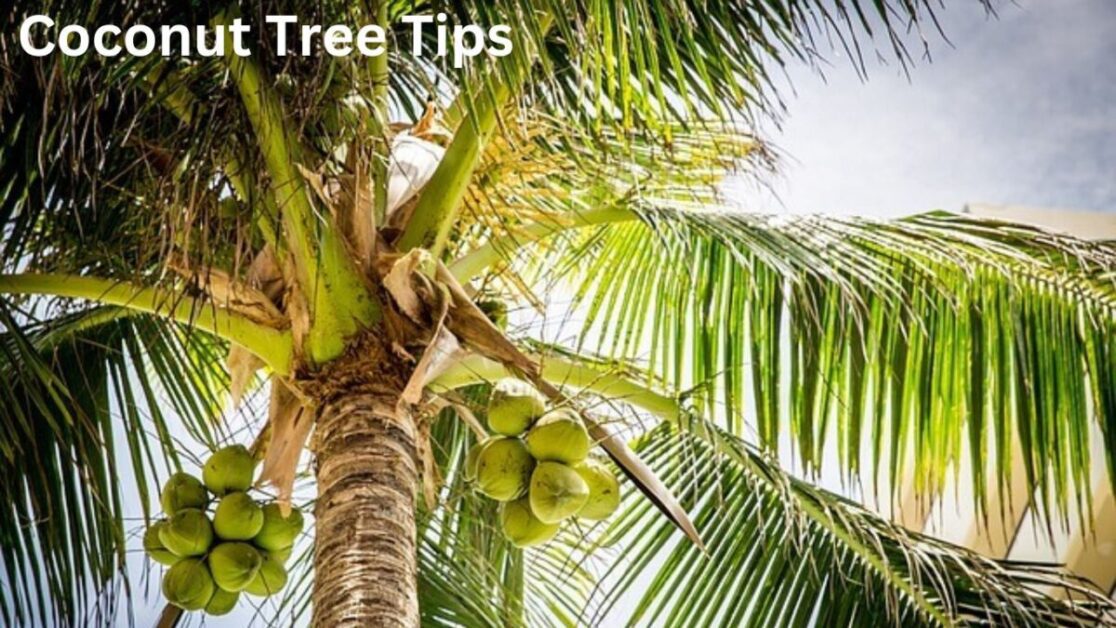
Protecting your coconut Tree from pests and diseases is crucial to maintaining a healthy and thriving tree. Several common pests can wreak havoc on coconut Tree , including the coconut mite, rhinoceros beetle, red palm weevil, and coconut hispine beetle. These pests can cause significant damage to foliage and fruit, leading to decreased productivity and even death of the tree if left untreated.
To protect your coconut Tree from pests, regular inspection is key. Look for early signs of infestation, such as discolored or damaged leaves, holes or tunnels in the trunk, or sawdust-like residue near the base of the tree. If you suspect the presence of pests, take immediate action by employing appropriate control measures. This may include spraying with insecticides, introducing natural predators, or physically removing the pests from the tree. Additionally, proper sanitation practices, such as removing fallen leaves and old fruit, can help prevent the buildup of pests and reduce their chances of infesting your coconut palm.
Diseases can also pose a significant threat to the health of your coconut palm. Common diseases include lethal yellowing, bud rot, and root rot. These diseases can lead to stunted growth, discoloration of fronds, and eventual death of the tree. Preventive measures such as planting disease-resistant varieties and maintaining good hygiene in your garden are essential. Proper irrigation practices, such as avoiding overwatering and ensuring proper drainage, can help prevent the onset of diseases.
In conclusion, protecting coconut palms from pests and diseases is crucial for maintaining their health and productivity. Regular inspection, timely action, and preventive measures can go a long way in safeguarding your coconut palm from potential damage. Stay vigilant and employ appropriate control methods to keep your tree thriving and disease-free.
Maintaining the Ideal Temperature and Humidity for Coconut Trees or Palms
Maintaining the ideal temperature and humidity is crucial for the healthy growth of coconut palms. These tropical trees thrive in warm and humid climates, which mimic their natural habitat.
To ensure optimal growth, coconut Tree require temperatures between 80°F and 100°F (27°C to 38°C). Temperatures below 70°F (21°C) can hinder their growth and even damage the trees. It is important to monitor the temperature in your coconut palm’s environment and provide protection during colder seasons or sudden drops in temperature.
Humidity is equally important for coconut Tree, as they thrive in high humidity environments ranging from 50% to 90%. Dry air can cause stress to the trees, leading to reduced growth, wilting fronds, and an increased susceptibility to pests and diseases. To maintain adequate humidity levels around your coconut palms, you can use misting systems, humidifiers, or grouping several palm trees together to create a microclimate. Additionally, providing a well-draining soil that retains moisture can contribute to maintaining optimal humidity levels.
Understanding the Different Varieties of Coconut Trees or Palms
Coconut palms (Cocos nucifera) are not just a staple in tropical landscapes, but they also come in a variety of forms. The differences between coconut palm varieties lie in their size, growth habits, and the characteristics of the coconuts they produce. Understanding the different varieties of coconut palms can help you select the appropriate one for your specific needs and growing conditions.
One popular variety is the “Malayan Dwarf” coconut palm. As the name suggests, this variety is known for its compact size, making it an ideal choice for smaller landscapes or container gardening. The “Malayan Dwarf” typically reaches a height of 20 to 30 feet, making it easier to reach and harvest its delicious coconuts. Another advantage of this variety is its ability to start producing coconuts at a younger age compared to other varieties. Its sweet and flavorful coconuts are often enjoyed fresh or used in cooking and baking.
On the other hand, if you have ample space and are looking for a majestic centerpiece for your garden, the “Tall” variety might be an excellent choice. These coconut palms can reach impressive heights of up to 100 feet, creating a tropical paradise in your backyard. The “Tall” coconut palms are also known for their high coconut yield, perfect for those who love to indulge in coconut milk, water, and other coconut-based treats. It’s important to note that the “Tall” variety takes longer to start producing coconuts, usually taking around six to ten years before the first harvest.
With the vast array of coconut palm varieties available, there is sure to be one that suits your preferences, space, and climate. Whether you opt for the compact “Malayan Dwarf” or the majestic “Tall” variety, having a coconut palm in your garden will not only provide you with delicious coconuts but will also evoke a sense of tropical serenity. Stay tuned for the next section, where we will delve into the intricacies of harvesting coconuts and the best timing and techniques to ensure a fruitful harvest.
Harvesting Coconuts: Timing and Techniques
Harvesting coconuts at the right time is crucial to ensure optimal flavor and quality. As coconuts mature, they undergo transformations that affect their taste and texture. Timing the harvest can be slightly tricky, as it depends on several factors such as the variety of the coconut palm, environmental conditions, and the intended use of the coconut.
One common method to determine the readiness for harvest is by observing the color and size of the coconut. Generally, mature coconuts exhibit a brown outer husk and have a substantial weight. Additionally, a ripe coconut will make a hollow sound when tapped with a finger or a small object. However, relying solely on color and sound may not always provide accurate results, especially in cases where the exterior of the coconut has been affected by external factors like sun exposure or pests. Hence, it is advisable to employ multiple indicators, including smell and taste, to ensure the coconut is fully developed.
The techniques employed during coconut harvesting are equally significant to maintain the quality of the fruit. After selecting a ripe coconut, it is crucial to handle it delicately to avoid any damage. Using a sharp tool, such as a machete, the stem connecting the coconut to the tree can be cut. Caution should be exercised during this process to prevent injury. Once detached, the coconut can be gently lowered to the ground to prevent any potential impact that may cause premature cracking. Proper cleaning and sanitization techniques should be followed before storing or consuming the harvested coconuts to ensure their safety and longevity.
Mastering the art of timing and employing appropriate techniques during coconut harvesting guarantees a bountiful yield of delicious and nutritious coconuts. As with any agricultural practice, it is essential to take into account the specific requirements of the coconut palm variety being cultivated, local environmental factors, and the desired purpose of the coconuts. By following these guidelines, gardeners and coconut enthusiasts can enjoy the satisfaction of reaping the rewards of their labor while relishing the exquisite flavors of freshly harvested coconuts.
Dealing with Common Coconut Palm Issues
Coconut palms are generally a hardy species, but like any other plant, they can face a range of issues that require prompt attention. One common problem that coconut palm growers encounter is nutrient deficiencies. Due to their fast growth rate and high nutrient demands, coconut palms can quickly deplete the soil of essential minerals. This can lead to yellowing leaves, stunted growth, and reduced fruit production. To address this issue, it is crucial to regularly fertilize coconut palms with a balanced, slow-release fertilizer to replenish the soil’s nutrient levels.
Another significant issue that coconut palm owners may face is the invasion of pests and diseases. Coconut palms can be susceptible to various insects, such as mealybugs, scale insects, and palm aphids. These pests can cause damage to the foliage, weaken the tree, and stunt its growth. Additionally, fungal diseases like bud rot and lethal yellowing can pose a severe threat to coconut palms, leading to their decline and eventual death. To prevent and manage these issues, it is essential to practice regular inspection and monitoring of the trees, identify any signs of pests or diseases early on, and take appropriate measures like applying insecticides or fungicides approved for coconut palms.
Dealing with common coconut palm issues requires vigilance and proactive care. By addressing nutrient deficiencies and promptly addressing any pest or disease infestations, growers can ensure the health and vitality of their coconut palms, leading to increased productivity and a thriving garden. Stay tuned for our next section, where we discuss propagation methods for coconut palms, allowing you to expand your coconut palm collection successfully.
Propagation Methods for Coconut Palms
When it comes to propagating coconut palms, there are a few methods that can be used successfully. One common method is through seed propagation. Coconut seeds, also known as coconuts, can be obtained from mature coconuts that have fallen from the tree. It’s essential to select fresh and viable seeds for better germination rates. Once obtained, these seeds can be planted directly in the ground or in containers filled with well-draining soil. Proper care should be taken to provide adequate water and sunlight during the germination process.
Another method of propagating coconut palms is through the use of seedlings. Seedlings are young coconut trees that have been grown from seeds and then transplanted into pots or well-prepared soil. This method ensures a more rapid and consistent growth rate compared to seed propagation. To use this method, it’s important to select healthy and vigorous seedlings, preferably around 6 to 9 months old. These seedlings can be transplanted into larger pots or directly into the ground, depending on the desired planting location.
Both seed propagation and seedling transplantation are effective methods for propagating coconut palms. The choice between the two methods will depend on factors such as time, resources, and personal preferences. Regardless of the method chosen, it’s crucial to provide proper care and maintenance to ensure the successful growth and development of the coconut palms.
Enhancing Growth and Productivity of Coconut Trees
Coconut trees are known for their impressive height and their ability to produce an abundance of coconuts. However, for those seeking to enhance the growth and productivity of these magnificent trees, there are several key factors to consider. One of the most important aspects of promoting growth is ensuring that the coconut tree is planted in the right location. These trees require full sun exposure and well-drained soil with a pH level between 5.5 and 7.0. Additionally, being native to tropical regions, coconut palms thrive in areas where the temperature remains consistently warm, ideally ranging between 80 and 95 degrees Fahrenheit.
In order to achieve optimal growth and productivity, it is also crucial to provide coconut trees with the appropriate amounts of water and nutrients. While these trees are relatively drought-tolerant, regular watering is necessary, especially during the dry season or when newly planted. Deep watering methods, such as drip irrigation or installing a soaker hose at the base of the tree, can help ensure that the roots receive adequate moisture.
When it comes to fertilization, coconut palms benefit from a slow-release fertilizer high in nitrogen, phosphorus, and potassium. Applying fertilizer every three to four months, following the instructions on the package, will provide the necessary nutrients for robust growth. By implementing these practices, coconut tree enthusiasts can enhance the growth and productivity of their beloved trees, resulting in a bountiful yield of delicious coconuts.
Landscaping with Coconut Palms: Creative Ideas and Tips
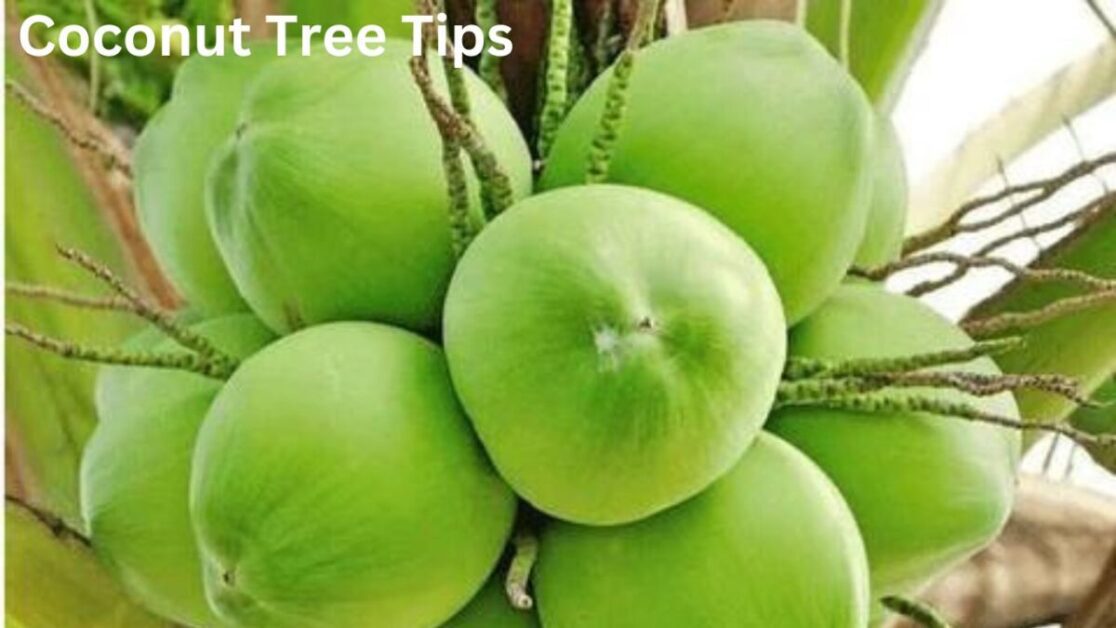
As you embark on your landscaping journey, consider the creative possibilities that can arise from incorporating coconut palms into your outdoor space. With their tall, graceful stature and lush green fronds, these majestic trees can add a touch of tropical paradise to any garden or yard.
One creative idea is to create a stunning focal point by planting a row of coconut palms along a pathway or driveway. The vertical lines formed by the tall trunks can help to visually divide and define the space, while the swaying fronds add a sense of movement and tranquility. This simple yet elegant design can instantly elevate the aesthetics of your landscape, creating a welcoming and tropical atmosphere.
Another option for incorporating coconut palms into your landscaping is to create a mini oasis by clustering them together. By planting several coconut palms in close proximity, you can create a cozy and shaded area beneath their canopy. This inviting space can serve as a perfect spot for relaxation, reading, or hosting outdoor gatherings. To enhance the ambiance, consider adding some decorative seating, outdoor lighting, or even a hammock for the ultimate tropical getaway right in your own backyard.
With these creative ideas in mind, the possibilities for landscaping with coconut palms are endless. Whether you choose to create a striking focal point or a serene oasis, these versatile trees can bring an element of exotic beauty to your outdoor space. So go ahead and unleash your creativity, and let coconut palms transform your landscape into a tropical paradise.
Here’s a table outlining some essential tips for nurturing your coconut palm:
| Tip | Description |
|---|---|
| Choose the Right Location | Plant your coconut palm in a sunny spot with well-draining soil. Coconut palms thrive in tropical or subtropical climates and require plenty of sunlight for optimal growth. |
| Provide Adequate Water | Ensure your coconut palm receives regular watering, especially during dry periods. While coconut palms tolerate drought once established, consistent moisture promotes healthy growth. |
| Fertilize Appropriately | Use a balanced fertilizer specifically formulated for palms. Apply fertilizer during the growing season, following package instructions to prevent over-fertilization. |
| Prune Dead or Damaged Fronds | Regularly remove dead or damaged fronds to maintain the palm’s appearance and health. Pruning also helps prevent the spread of diseases and pests within the palm canopy. |
| Prevent Pest Infestations | Monitor your coconut palm for signs of pest infestations, such as coconut mites or mealybugs. Use insecticidal soap or neem oil to control pests, avoiding chemical pesticides if possible. |
| Protect Against Frost | If you live in a region prone to frost, provide protection for your coconut palm during cold spells. Cover the palm with blankets or frost cloth to shield it from freezing temperatures. |
| Mulch for Moisture Retention | Apply a layer of organic mulch around the base of the coconut palm to help retain moisture in the soil and suppress weed growth. Mulching also regulates soil temperature and improves soil health. |
| Monitor Nutrient Deficiencies | Watch for signs of nutrient deficiencies, such as yellowing fronds or stunted growth. Adjust fertilizer applications or soil amendments accordingly to ensure your coconut palm receives essential nutrients. |
| Support Young Palms | Provide support for young coconut palms to prevent them from toppling over in strong winds or heavy rain. Staking or bracing young palms helps establish a strong root system and promotes upright growth. |
| Regular Inspections | Conduct regular inspections of your coconut palm for signs of disease, nutrient deficiencies, or environmental stress. Early detection allows for prompt treatment and ensures the palm’s continued health and vigor. |
Implementing these tips will help you nurture your coconut palm and promote its healthy growth and development.
Sustainable Practices for Coconut Palm Cultivation
Sustainable practices are crucial for the successful cultivation of coconut palms. These practices not only ensure the health and longevity of the trees but also promote environmental conservation. One sustainable practice that can be adopted is the use of organic fertilizers. By opting for organic fertilizers, gardeners can reduce their reliance on synthetic chemicals, thus minimizing the risk of soil and water pollution. Additionally, organic fertilizers contribute to the overall soil health by improving its structure and fertility, leading to healthier coconut palms with enhanced nutrition uptake.
Another sustainable practice is the implementation of water conservation techniques. Coconut palms require a significant amount of water for their growth and development, especially during the establishment phase. By utilizing efficient irrigation methods such as drip irrigation or using rainwater harvesting techniques, gardeners can minimize water wastage and ensure that water is utilized effectively. Implementing mulching techniques around the base of the tree can also help in conserving moisture by reducing evaporation from the soil surface, thus reducing the frequency of irrigation.
In the next section, we will explore more sustainable practices that can be integrated into coconut palm cultivation, including pest management strategies and soil conservation techniques. Through the adoption of these practices, gardeners can not only enjoy healthy and productive coconut palms but also contribute to the sustainable management of our natural resources.
How long does it take for a coconut palm tree to bear fruit?
It typically takes around 5 to 6 years for a coconut palm tree to bear fruit.
Can coconut palms grow in a cold climate?
No, coconut palms thrive in tropical and subtropical climates and cannot tolerate cold temperatures.
Do coconut palm trees require a lot of water?
Yes, coconut palm trees require regular watering, especially during dry periods. They need to be watered deeply but should not be overwatered.
Are there any specific pruning techniques for coconut palms?
Yes, pruning should be done carefully to remove dead or diseased fronds and to maintain the tree’s shape. It is important to avoid excessive pruning as it can harm the tree.
Can coconut palms be affected by pests and diseases?
Yes, coconut palms can be susceptible to pests and diseases such as coconut mites, bud rot, and lethal yellowing disease. Regular inspection and proper care can help prevent and manage these issues.
Are all varieties of coconut palm suitable for cultivation?
No, not all varieties of coconut palms are suitable for cultivation in all regions. It is important to select varieties that are well-adapted to the local climate and soil conditions.
When is the ideal time to harvest coconuts?
Coconuts should be harvested when they are fully mature, which is usually indicated by a brown husk and a hollow sound when tapped.
How can I enhance the growth and productivity of coconut trees?
Providing proper irrigation, fertilization, and regular care can enhance the growth and productivity of coconut trees. Additionally, ensuring sufficient sunlight and protecting them from strong winds can also promote healthy growth.
Can I propagate coconut palms from seeds?
Yes, coconut palms can be propagated from seeds. However, it is important to use fresh and mature seeds for successful propagation.
Are there any eco-friendly practices for coconut palm cultivation?
Yes, there are sustainable practices for coconut palm cultivation, such as using organic fertilizers, conserving water through efficient irrigation techniques, and implementing integrated pest management strategies to minimize the use of pesticides.



